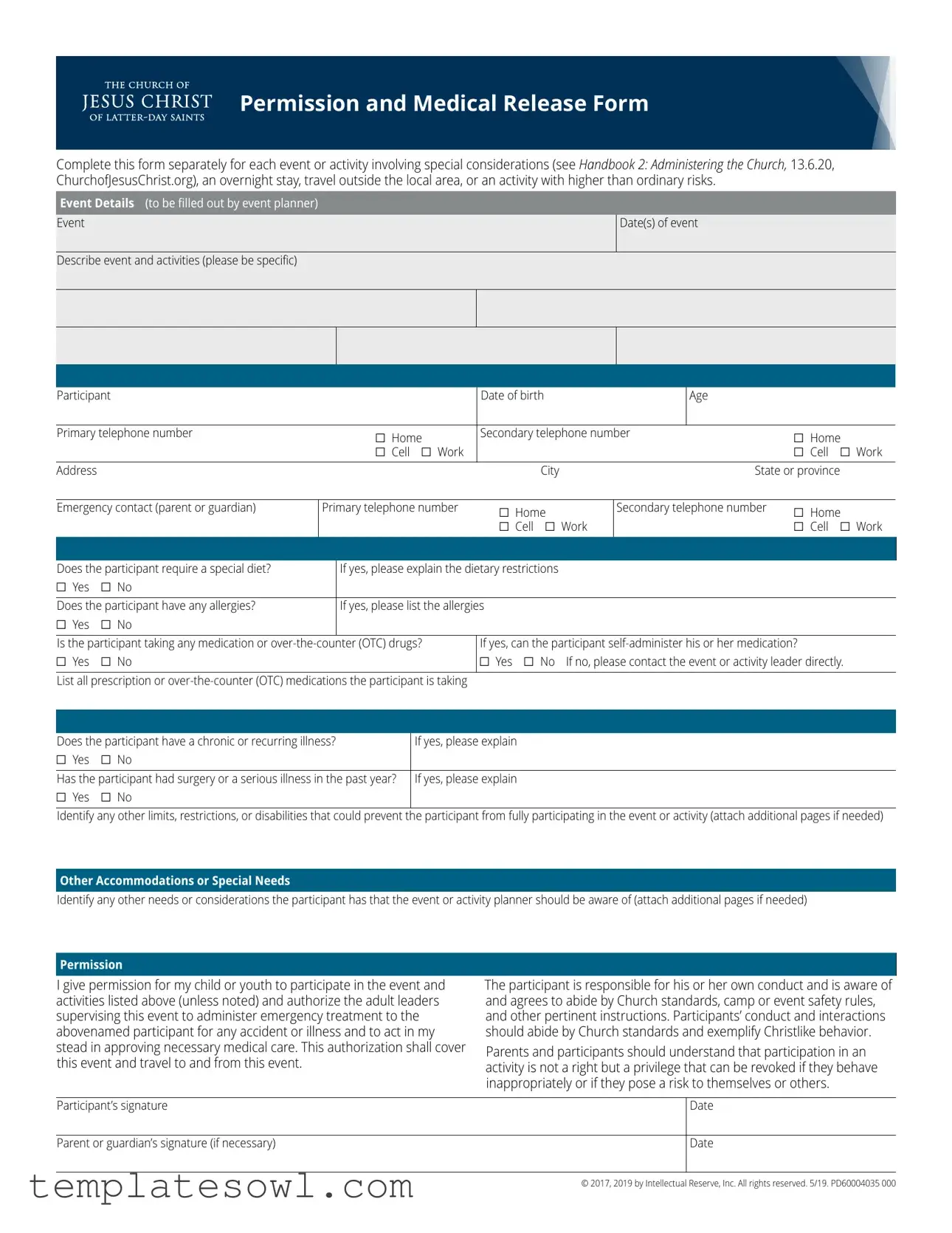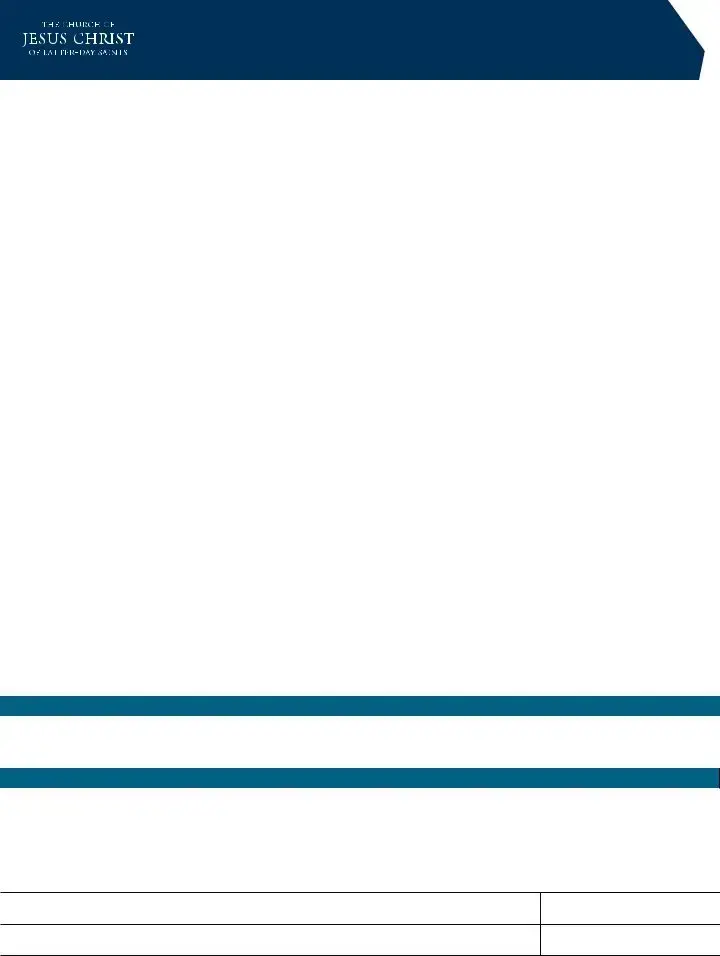What is the purpose of the LDS Permission and Medical Release Form?
This form allows parents or guardians to give permission for their child or youth to participate in specific events or activities organized by the Church of Jesus Christ of Latter-day Saints. It also includes a medical release, allowing event leaders to administer emergency treatment if necessary. The form ensures that everyone involved is informed about the participant's health and any special needs.
When should I complete this form?
You should complete this form for each separate event or activity that involves special considerations, such as an overnight stay, travel outside the local area, or activities with higher risks. It’s crucial to fill out a new form for each event to ensure that accurate information is provided for that specific occasion.
How much detail is required when describing the event and activities?
It is important to be as specific as possible in describing the event and its activities. Providing details helps parents and guardians understand what their child will be doing, the level of supervision involved, and any risks associated with the event.
What should I do if my child has special dietary restrictions?
If your child has special dietary restrictions, you must indicate this on the form and provide a detailed explanation. This information enables event planners to accommodate your child’s needs and ensures that they have safe food options during the event.
What happens if my child requires medication during the event?
You should list all medications your child is taking on the form. If they can self-administer their own medication, please indicate that clearly. If not, you should contact the event leader directly to discuss how their medication will be managed during the event.
Is there a need to disclose any allergies or chronic illnesses?
Yes, it’s essential to disclose any allergies or chronic illnesses your child may have. This information helps event leaders provide necessary care and safeguards during the event. In the case of allergies, it’s particularly important to avoid any potentially harmful situations.
What does it mean to authorize leaders to administer emergency treatment?
By signing the form, you allow adult leaders overseeing the event to make decisions regarding emergency medical treatment if your child becomes ill or injured. This authorization is vital for ensuring that timely medical assistance can be provided when necessary, especially in emergency situations.
Can my child’s participation be revoked?
Yes, your child’s participation in the event is considered a privilege. If your child behaves inappropriately or poses a risk to themselves or others, event leaders have the authority to revoke their participation. It’s important to discuss appropriate behavior and Church standards with your child before the event.

